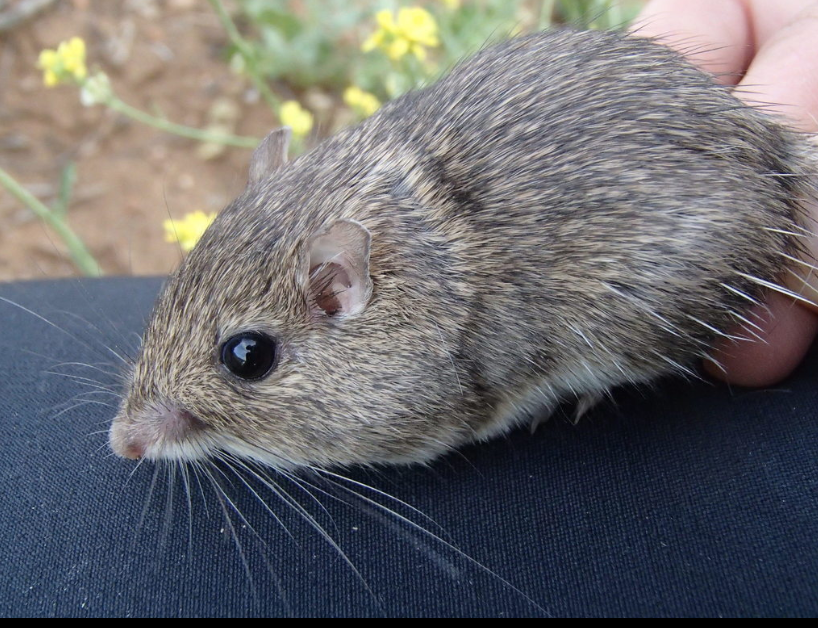


Live-trapping at a subset of plots within each population site helps to explain varying population dynamics across Pacific pocket mouse habitat and characterize the relationship between habitat variables and reproductive success. In addition to track tubes, several live-trapping sessions are conducted throughout the monitoring period to provide data on Pacific pocket mouse demography, survivorship among years, as well as onset, timing, and length of reproduction. Data from systematically deployed track tubes can inform researchers about occupancy, colonization, extinction, seasonal activity, as well as co-occurring species. Biologists are then able to interpret tracks and identify the distinct prints of Pacific pocket mouse and other sympatric rodent species. When small mammals enter the track tube to retrieve bait, they step on an inked pad and leave prints on track paper inside. In pilot studies, passive sampling using track tubes demonstrated the best detection probability, lowest impact to the species and habitat, and was most cost-effective among the sampling methodologies tested. Track tube surveys are a simple and passive method of identifying small mammals by their tracks.

Within each plot, a subset of 32 subplots are sampled using track tubes. Each plot is multi-scaled, comprised of 64 smaller 12.5 m x 12.5 m (0.0156 ha) subplots (the average size of a core Pacific pocket mouse home range), to allow researchers to explore the dynamics of these populations at different spatial scales as they respond to changes in habitat and disturbance. USGS established a number of 100 m x 100 m (1.0 ha) monitoring plots stratified across all population sites on Camp Pendleton. This design allows USGS to track trends and identify predictors of occupancy, colonization, and extinction.įull monitoring efforts began in 2012. Following these informative studies, USGS researchers collaborated with a scientific panel to design a relatively simple, multi-scaled, habitat-based, adaptive monitoring program for Pacific pocket mouse on Camp Pendleton. Studies included live-trapping, canine scent detection, and newly developed track tubes. Several pilot studies were carried out by USGS to determine the best sampling methodology to meet program goals and objectives. In 2007, the USGS was contracted to develop a scientifically valid and cost-effective monitoring program for the Pacific pocket mouse on Camp Pendleton to help fulfill stewardship and regulatory requirements for the natural resources on Base. Potential threats and stressors include habitat loss, habitat alteration, fragmentation, predation risks, competition for seed resources, and impacts from vibrations, noise, and artificial lighting. There are currently only three known extant populations, one on Dana Point and the two largest on Marine Corps Base Camp Pendleton. They were believed to be extinct in 1972, but were rediscovered in 1993, and federally listed as endangered in 1994. The Pacific pocket mouse has historically occupied marine terraces and alluvial plains along the southern California coast and has been typically associated with open patches of sandy soils. They exhibit typical behaviors of heteromyid rodents including sand bathing to keep pelage clean and healthy, collecting seeds in external cheek pouches, and caching of seeds below ground and within burrow systems for sustenance throughout the year.

The Pacific pocket mouse is one of 19 subspecies of the little pocket mice in the Heteromyid family and weighs an average of only 6 grams (0.04 oz). This video shows a Pacific pocket mouse (Perognathus longimembris pacificus) sandbathing at Marine Corps Base Camp Pendleton in 2015.


 0 kommentar(er)
0 kommentar(er)
